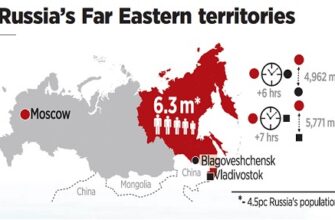In recent months, a new and unsettling rhythm has settled over the southern regions of Russia. The familiar hum of approaching trains is now often accompanied by an undercurrent of uncertainty, as vital rail networks become frequent targets of drone attacks. What once were rare incidents have evolved into a stark new reality, challenging infrastructure, disrupting civilian travel, and forging a weary, yet persistent, form of societal adaptation.
The Unfolding Scenario: Drones and Delays
The night skies above regions like Volgograd and Rostov have grown increasingly fraught. Reports frequently detail the fall of unmanned aerial vehicles (UAVs), sometimes near residential areas, and other times directly impacting critical transport infrastructure. Just recently, passengers traveling through the Volgograd region experienced delays of up to two hours near the town of Petrov Val after a drone incident. While the railway administration quickly confirmed no human casualties directly from the train-related event, the broader context saw other drones causing injuries in nearby residential zones, affecting three people, including a child.
Further west, in the Rostov region, the disruptions were even more pronounced. A drone incident near the Sergeevka station led to a significant compromise of the electrical contact network, the lifeblood of modern railway operations. This technical setback brought train movement to a standstill, leading to delays stretching up to three hours and forty minutes for dozens of passenger trains. The sheer scale of these incidents underscores a persistent challenge for regional authorities and railway operators.
A `New Normal` on the Tracks
For many residents and frequent travelers in these areas, the concept of “military alert” has, perhaps disturbingly, become a part of their travel lexicon. A producer for Business FM, Aleksey Shevtsov, recounted his experience on a train from Moscow to Mineralnye Vody. After an unscheduled halt, a conductor reportedly informed passengers of a “military alert,” advising them to dim lights and avoid phone use. Such directives, once unimaginable, are now delivered with a disquieting regularity, highlighting a systemic shift in how daily life intersects with ongoing geopolitical tensions.
“It`s the second case in recent memory,” notes Vera Yuzhanskaya, editor-in-chief of the Rostov newspaper “Nashe Vremya,” reflecting on the recent incidents. “Due to how the tracks are laid in this area, the slightest delay elsewhere causes a bottleneck.” She further elaborated on the difficult choices made by authorities: “It’s better to protect people, so movement is stopped. There have been cases where a drone hit a train car, injuring people. To prevent this, trains are simply dispersed and held on sidings.”
This forced pause in transit often means hours spent in stagnant train cars, sometimes without functioning air conditioning in what can be sweltering conditions. At stations, passengers congregate, waiting for updates and the resumption of their journeys. Yet, a peculiar form of resilience has emerged. Station staff, now well-versed in crisis management, ensure increased supplies of food and water for stranded travelers. There is “no panic, no fuss,” Yuzhanskaya observes, “because people have adapted to the possibility of large crowds at the station.” A grim testament, perhaps, to the human capacity for adaptation, or simply a weary acceptance of the unavoidable.
Infrastructure Under Pressure: The Race to Restore
The railway system itself, designed for seamless movement, now faces the formidable task of rapid recovery. Damaged contact networks and power lines demand immediate attention from repair crews. The Priivolzhskaya Railway and Russian Railways (RZD) have lauded their teams for “prompt actions,” which have consistently led to the swift resumption of traffic. However, “resumption” does not instantly erase the cumulative effect of hours-long delays, necessitating a complex logistical ballet to bring schedules back into alignment.
These recent incidents are not isolated occurrences but rather part of a pattern. A more extensive disruption occurred on July 21st, when an incident at Kamennolomi station resulted in over 50 trains being delayed. That event saw the roof of the railway station catch fire and critical infrastructure, including the dispatch center, damaged by falling drone debris. Each incident serves as a brutal reminder of the vulnerability of sprawling rail networks to precision, or even imprecise, strikes.
Looking Ahead: Resilience and the Enduring Challenge
The ongoing drone attacks on Russia`s southern railway infrastructure present a multi-faceted challenge. From a technical standpoint, it demands continuous innovation in defense and rapid repair capabilities. From a logistical perspective, it requires railway operators to maintain an unprecedented level of preparedness for widespread disruptions. But perhaps most significantly, from a societal viewpoint, it tests the patience and resilience of ordinary citizens whose daily lives and travel plans are increasingly subject to an unpredictable external threat.
While officials strive to minimize the impact and restore normalcy with commendable speed, the recurring nature of these events suggests that the “new normal” of vigilance and adaptation along Russia`s southern rail lines is here to stay, at least for the foreseeable future. The whistle of a train now carries not just the promise of travel, but also the silent echo of an ongoing, disruptive reality.
This article aims to provide a clear and concise overview of a complex situation, based on available news and expert commentary, without sensationalism or undue academic complexity.








